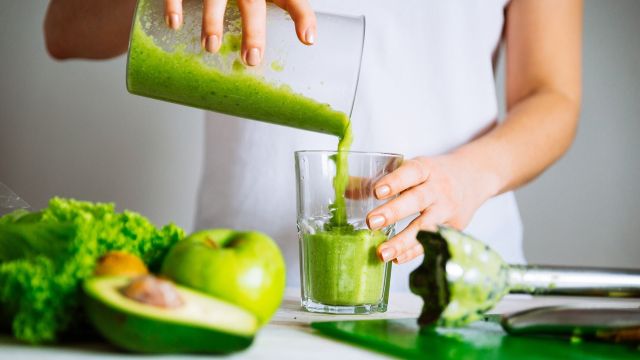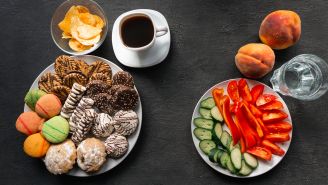Updated on February 12, 2024.
Smoothies have a reputation for being healthy. And compared to ultra-processed foods like candy and packaged cookies, many of them are. But if you're overloading your blender, even with healthy ingredients, you could be consuming more calories than you realize. Over time, this can contribute to weight gain.
The good news: You can still make a satisfying, delicious smoothie satisfying while keeping its calorie content in check. Try these tips to get started.
Laying a lower-calorie base
Start with produce that will add substance and nutrients without a lot of extra sugar and calories. Leafy greens like spinach and kale are popular picks. They’re high in vitamins A and C, as well as fiber, which can help you feel full and prevent overeating later. Fiber also promotes heart health and digestive well-being. Some research even suggests upping your intake could help you drop pounds.
Fruit is another wise choice due to its vitamin, mineral, and fiber content. That may be why flavorful, antioxidant-rich berries are sensible selections for smoothie fans. Just about any berry works, though blueberries, strawberries, blackberries, and/or raspberries are found in many blends. As a rule of thumb, don’t blend more fruit than you’d be able to eat whole.
To save money and ensure a thick and frosty smoothie, consider shopping the frozen food aisle. Frozen berries offer the same nutrients as their fresh-picked counterparts, but typically cost less. Just be sure to reach for 100 percent fruit with no added sugars. Buying in-season fruits and veggies rather than imported produce is another way to save at the grocery store.
Choosing filling add-ins
Sure, fruits and veggies are great, but why stop there? These nutrient-packed blend-ins can fill you up and add an extra layer of flavor and texture.
Chia seeds: Sprinkle 1 tablespoon of this poppy seed look-alike into your smoothie for a boost of heart-healthy omega-3 fatty acids. You’ll get almost 20 percent of the recommended daily intake of fiber.
Protein powder: Some research suggests we tend to not get enough protein as we age. While protein should ideally come from our diets, an extra boost in the morning could help meet your goals. A single scoop of whey, pea, or soy protein carries between 100 and 120 calories and over 20 grams of protein. Ask your healthcare provider if it’s a good choice for you. Since many protein powders are available in stores and online—and some can be high in sugar—it’s wise to research before you buy.
Avocado: Don’t be scared off by the fat content of avocados. Moderate consumption of healthy fats is an important part of a healthy diet, and some studies suggest they can even be part of a weight loss regimen.
A suggested serving size is one-fifth of an avocado, which contains about 10 percent of the recommended daily intake of fiber and good-for-you monounsaturated fats. Combine with frozen berries, a handful of greens, a splash of plant-based or low-fat milk, and a couple of ice cubes for a refreshing smoothie.







